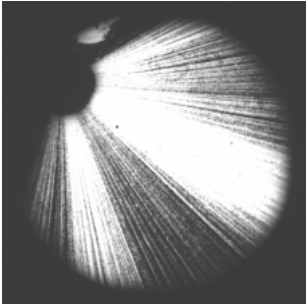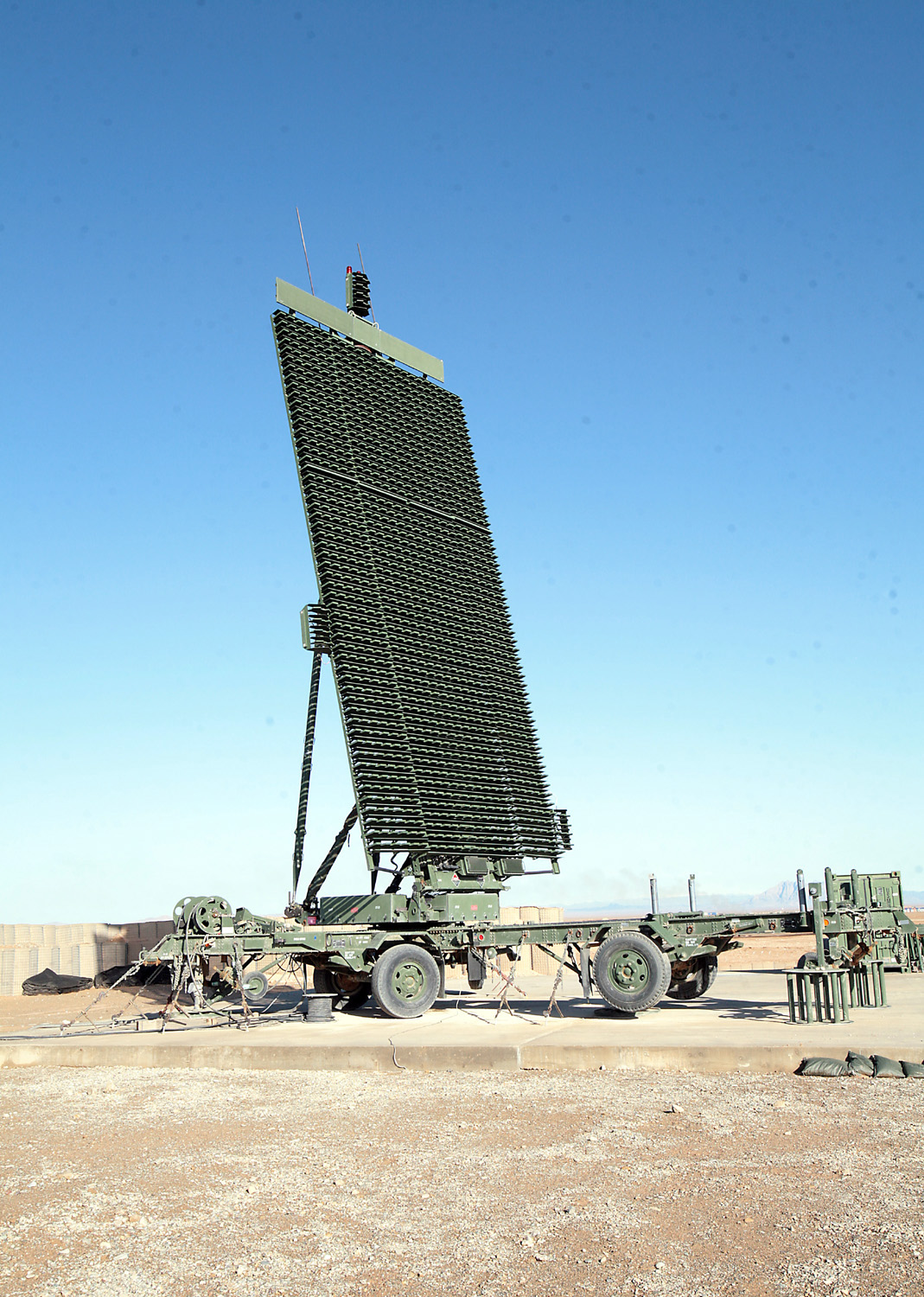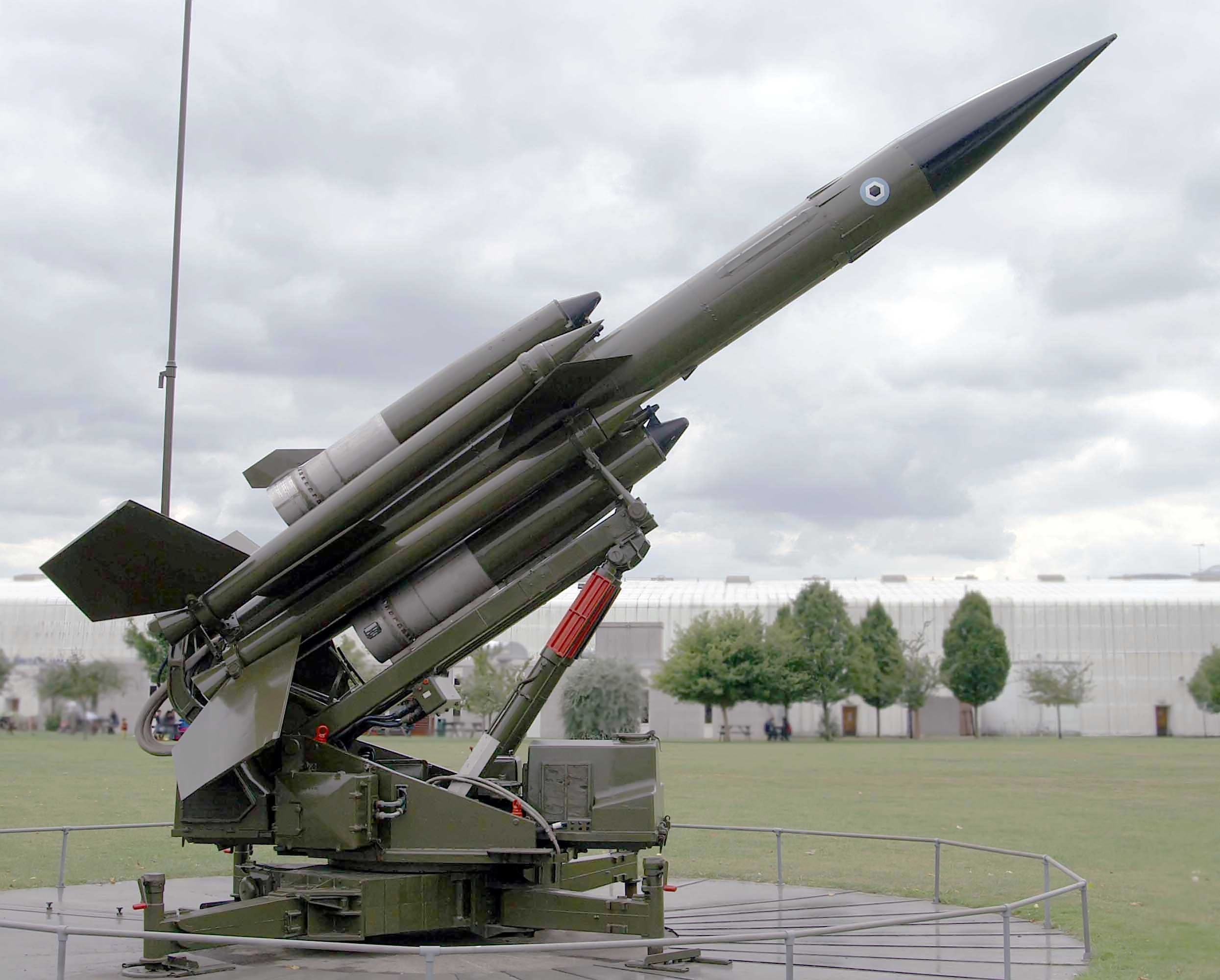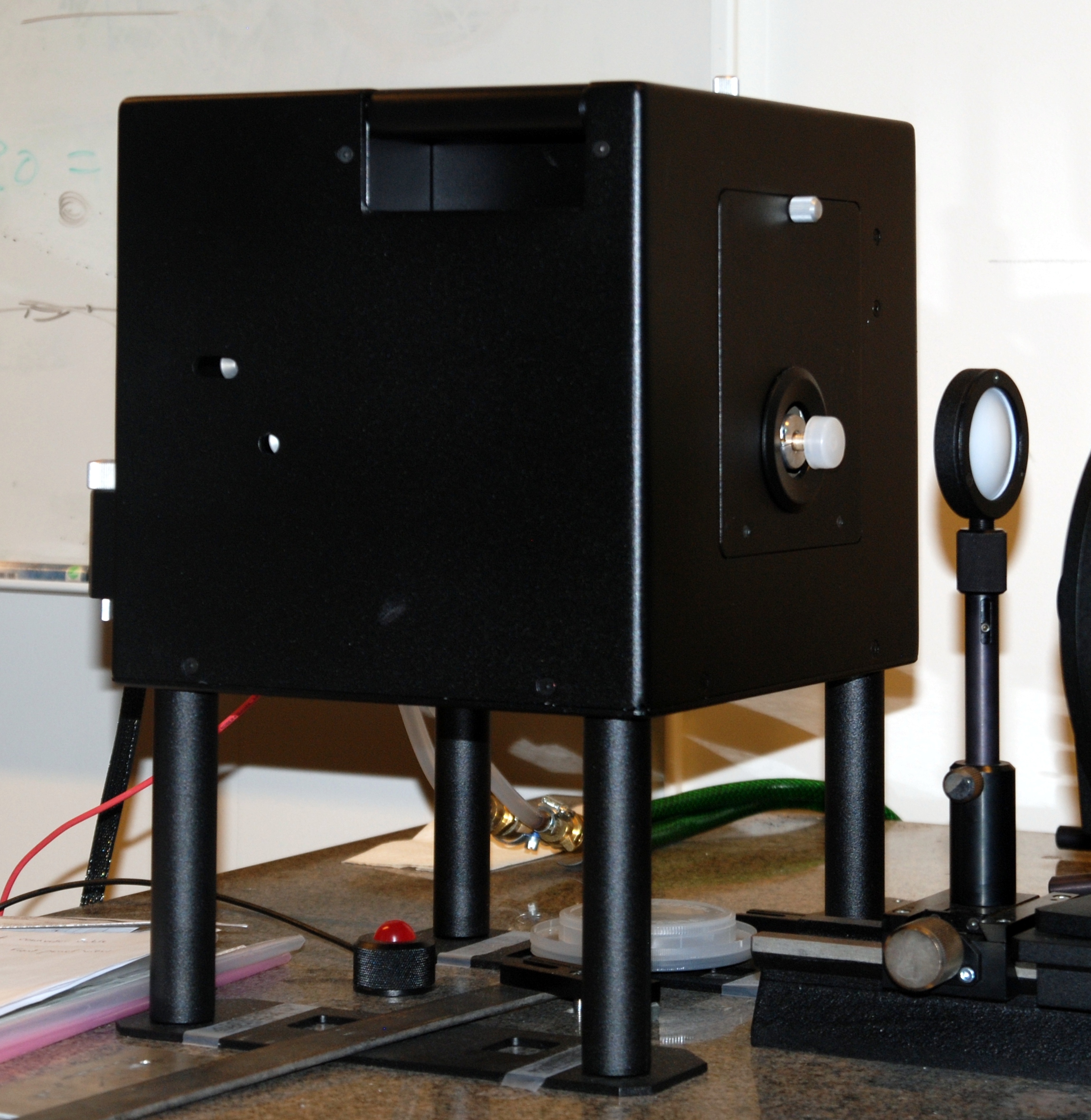|
UKADGE
The Improved United Kingdom Air Defence Ground Environment, normally shortened to either UKADGE or IUKADGE, was the Royal Air Force's (RAF) ground-controlled interception system covering the British Isles during the 1990s. It consisted of a number of ground-based radar sites, links to airborne early warning aircraft and Royal Navy ships, a telecommunications system to send digital data and voice communications on a protected network, and processing systems based on VAX-11/780 computers. The network ultimately contained a dozen long-range radars including four Marconi Martello, two General Electric TPS-592, and six Plessey AR-320. UKADGE was developed in response to concerns about its predecessor, Linesman/Mediator. Linesman started in the 1950s, when it was assumed that any air attack on the UK would be by hydrogen bomb so no effort was made to "harden" the radars or its main control centre as such effort would be futile. By the mid-1960s, with the Soviet Union reaching strateg ... [...More Info...] [...Related Items...] OR: [Wikipedia] [Google] [Baidu] |
Marconi Martello
Martello is a family of phased array radar systems developed by Marconi Electronic Systems in the 1970s and introduced operationally in the early 1980s. They provided long-range early warning capabilities but also had the accuracy needed for interception plotting and "putting on" of other weapons systems like surface-to-air missiles. The name comes from the Martello towers that provided defence in earlier years. A key feature of the new design was its solution to measuring altitude. Earlier mechanically scanned 3D radars used multiple feed horns in a vertical stack, but this was difficult to make in a mobile form; when moved they would go out of alignment. Newer phased arrays used electronic phase shifters to sweep up and down to measure angles, but this required expensive electronics. Martello used fixed phase shifters to produce a pattern of eight stacked beams, recreating the multiple feed horn pattern in a small box that was inexpensive to implement. The system was initially ... [...More Info...] [...Related Items...] OR: [Wikipedia] [Google] [Baidu] |
Plessey AR-320
The AR-320 is a 3D early warning radar developed by the UK's Plessey in partnership with US-based ITT-Gilfillan. The system combined the receiver electronics, computer systems and displays of the earlier Plessey AR-3D with a Gilfillan-developed transmitter and planar array antenna from their S320 series. The main advantage over the AR-3D was the ability to shift frequencies to provide a level of frequency agility and thus improve its resistance to jamming. The system was designed for sales to the Royal Air Force and a NATO contract for mobile radars on the southern flank of Europe. In 1983, after an extended contest against the Hughes Air Defence Radar, the Royal Air Force ordered six AR-320 systems for their newly forming IUKADGE network under the service name AMES Type 93. The AR-320s were to be held in off-site locations and quickly moved to pre-surveyed areas in case the main radars in the network were attacked. In service, the AR-320 proved to be much less robust than adve ... [...More Info...] [...Related Items...] OR: [Wikipedia] [Google] [Baidu] |
Linesman/Mediator
Linesman/Mediator was a dual-purpose civil and military radar network in the United Kingdom between the 1960s and 1984. The military side (Linesman) was replaced by the Improved United Kingdom Air Defence Ground Environment (IUKADGE), while the civilian side (Mediator) became the modern public-private National Air Traffic Services (NATS). In the 1950s, the Royal Air Force was installing a radar network known as ROTOR using war-era radars like Chain Home along with new command centres. A new radar, the AMES Type 80, replaced all of the ROTOR radars and command centres with a series of nine Master Control Radars and a number of associated secondary radars. While these installations were in progress in the early 1950s, Compagnie générale de la télégraphie sans fil, CSF introduced the carcinotron, which could output a radio signal at any desired frequency. This made it a very effective Radar jamming and deception, jamming system, and it appeared to render ground-based radars li ... [...More Info...] [...Related Items...] OR: [Wikipedia] [Google] [Baidu] |
AN/TPS-59
The AN/FPS-117 is an L-band active electronically scanned array (AESA) 3-dimensional air search radar first produced by GE Aerospace in 1980 and now part of Lockheed Martin. The system offers instrumented detection at ranges on the order of and has a wide variety of interference and clutter rejection systems. The system was originally developed as part of the "Seek Igloo/Seek Frost" effort to replace the older radar systems of the DEW line with designs that could be operated remotely and require much less maintenance as part of DEW's replacement, the American-Canadian North Warning System (NWS). Implementation of the NWS resulted in a reduction in operations and maintenance spending by up to 50% compared to previous systems. GE made a number of modifications to the basic design to better tailor it to different roles. To fill a need for the US Marine Corps, GE developed the transportable AN/TPS-59, and later combined design elements to produce the smaller AN/TPS-77 which is even ... [...More Info...] [...Related Items...] OR: [Wikipedia] [Google] [Baidu] |
1957 Defence White Paper
The 1957 White Paper on Defence (Cmnd. 124) was a British white paper issued in March 1957 setting forth the perceived future of the British military. It had profound effects on all aspects of the defence industry but probably the most affected was the British aircraft industry. Duncan Sandys, the recently appointed Minister of Defence, produced the paper. The decisions were influenced by two major factors: the finances of the country and the coming of the missile age. In the past, combat in the air would have been between aircraft, with high flying bombers carrying nuclear weapons and fast interceptor fighter aircraft trying to stop them. Now the ballistic missile could deliver these weapons with no possible defensive response. In this new environment, the interceptors and surface-to-air missiles (SAMs), along with their associated radar networks, seemed superfluous. Likewise, it appeared new manned aircraft of any sort would have little utility in airspace dominated by SAMs. Num ... [...More Info...] [...Related Items...] OR: [Wikipedia] [Google] [Baidu] |
Ballistic Missile
A ballistic missile is a type of missile that uses projectile motion to deliver warheads on a target. These weapons are guided only during relatively brief periods—most of the flight is unpowered. Short-range ballistic missiles stay within the Earth's atmosphere, while intercontinental ballistic missiles (ICBMs) are launched on a sub-orbital flight. These weapons are in a distinct category from cruise missiles, which are aerodynamically guided in powered flight. Unlike cruise missiles, which are restricted to the atmosphere, it is advantageous for ballistic missiles to avoid the denser parts of the atmosphere and they may travel above the atmosphere into outer space. History The earliest form of ballistic missile dates from the 13th century with its use derived from the history of rockets. In the 14th century, the Ming Chinese navy used an early form of a ballistic missile weapon called the Huolongchushui in naval battles against enemy ships.Needham, Volume 5, Part 7, ... [...More Info...] [...Related Items...] OR: [Wikipedia] [Google] [Baidu] |
Violet Friend
Violet Friend was the Ministry of Supply rainbow code for an anti-ballistic missile (ABM) system developed in the United Kingdom. The project began in 1954 with study contracts for an early warning radar system, which was followed by the February 1955 release of Air Staff Target 1135 (AST.1135) calling for a system to counter intermediate range ballistic missiles (IRBMs) being fired at the UK from eastern Europe. AST.1135 required the system to be able to attack six targets at once and be ready for initial deployment in 1963. After many changes, due both to technical progress and changes in the strategic mission, in 1958 an interim design emerged that used existing missiles and radars to lower development costs. The concept used AMES Type 85 radars in East Anglia for long-range early detection as soon as the missiles rose above the radar horizon. Initial tracking of the warheads would then be handed off to AN/FPS-16 radars in the UK and the Netherlands. As they approached the UK ... [...More Info...] [...Related Items...] OR: [Wikipedia] [Google] [Baidu] |
V Bomber
The "V bombers" were the Royal Air Force (RAF) aircraft during the 1950s and 1960s that comprised the United Kingdom's strategic nuclear strike force known officially as the V force or Bomber Command Main Force. The three models of strategic bomber, known collectively as the ''V class'', were the Vickers Valiant, which first flew in 1951 and entered service in 1955; the Avro Vulcan, which first flew in 1952 and entered service in 1956; and the Handley Page Victor, which first flew in 1952 and entered service in 1957. The V Bomber force reached its peak in June 1964 with 50 Valiants, 70 Vulcans and 39 Victors in service. When it became clear that the Soviet Union's surface-to-air missiles like the S-75 Dvina could bring down high-flying aircraft, the V bomber force changed to low-level attack methods. Additionally the Blue Steel missile profile was changed to one of low level penetration and release. This reduced its range significantly. It was then planned to move to the mu ... [...More Info...] [...Related Items...] OR: [Wikipedia] [Google] [Baidu] |
AMES Type 80
The AMES Type 80, sometimes known by its development rainbow code Green Garlic, was a powerful early warning (EW) and ground-controlled interception (GCI) radar developed by the Telecommunications Research Establishment (TRE) and built by Decca for the Royal Air Force (RAF). It could reliably detect a large fighter or small bomber at ranges over , and large, high-flying aircraft were seen out to the radar horizon. It was the primary military ground-based radar in the UK from the mid-1950s into the late 1960s, providing coverage over the entire British Isles. In the late 1940s, the RAF developed the ROTOR plan to provide radar coverage over the UK in a phased rollout. As part of Stage 2, a new radar with long range would be deployed starting in 1957. But a TRE research project, Green Garlic, appeared to be able to fill the same role. The first examples of the Type 80 were being installed in 1953 and became operational in 1955. New sites received updated Mark III models and some f ... [...More Info...] [...Related Items...] OR: [Wikipedia] [Google] [Baidu] |
Tornado F3 RAF Armed
A tornado is a violently rotating column of air that is in contact with both the surface of the Earth and a cumulonimbus cloud or, in rare cases, the base of a cumulus cloud. It is often referred to as a twister, whirlwind or cyclone, although the word cyclone is used in meteorology to name a weather system with a low-pressure area in the center around which, from an observer looking down toward the surface of the Earth, winds blow counterclockwise in the Northern Hemisphere and clockwise in the Southern. Tornadoes come in many shapes and sizes, and they are often visible in the form of a condensation funnel originating from the base of a cumulonimbus cloud, with a cloud of rotating debris and dust beneath it. Most tornadoes have wind speeds less than , are about across, and travel several kilometers (a few miles) before dissipating. The most extreme tornadoes can attain wind speeds of more than , are more than in diameter, and stay on the ground for more than 100 km ( ... [...More Info...] [...Related Items...] OR: [Wikipedia] [Google] [Baidu] |
Air Surveillance And Control System
The atmosphere of Earth is the layer of gases, known collectively as air, retained by Earth's gravity that surrounds the planet and forms its planetary atmosphere. The atmosphere of Earth protects life on Earth by creating pressure allowing for liquid water to exist on the Earth's surface, absorbing ultraviolet solar radiation, warming the surface through heat retention (greenhouse effect), and reducing temperature extremes between day and night (the diurnal temperature variation). By mole fraction (i.e., by number of molecules), dry air contains 78.08% nitrogen, 20.95% oxygen, 0.93% argon, 0.04% carbon dioxide, and small amounts of other gases. Air also contains a variable amount of water vapor, on average around 1% at sea level, and 0.4% over the entire atmosphere. Air composition, temperature, and atmospheric pressure vary with altitude. Within the atmosphere, air suitable for use in photosynthesis by terrestrial plants and breathing of terrestrial animals is found only in Ea ... [...More Info...] [...Related Items...] OR: [Wikipedia] [Google] [Baidu] |
Carcinotron
A backward wave oscillator (BWO), also called carcinotron or backward wave tube, is a vacuum tube that is used to generate microwaves up to the terahertz range. Belonging to the traveling-wave tube family, it is an oscillator with a wide electronic tuning range. An electron gun generates an electron beam that interacts with a slow-wave structure. It sustains the oscillations by propagating a traveling wave backwards against the beam. The generated electromagnetic wave power has its group velocity directed oppositely to the direction of motion of the electrons. The output power is coupled out near the electron gun. It has two main subtypes, the M-type (M-BWO), the most powerful, and the O-type (O-BWO). The output power of the O-type is typically in the range of 1 mW at 1000 GHz to 50 mW at 200 GHz. Carcinotrons are used as powerful and stable microwave sources. Due to the good quality wavefront they produce (see below), they find use as illuminators in terahertz ... [...More Info...] [...Related Items...] OR: [Wikipedia] [Google] [Baidu] |








